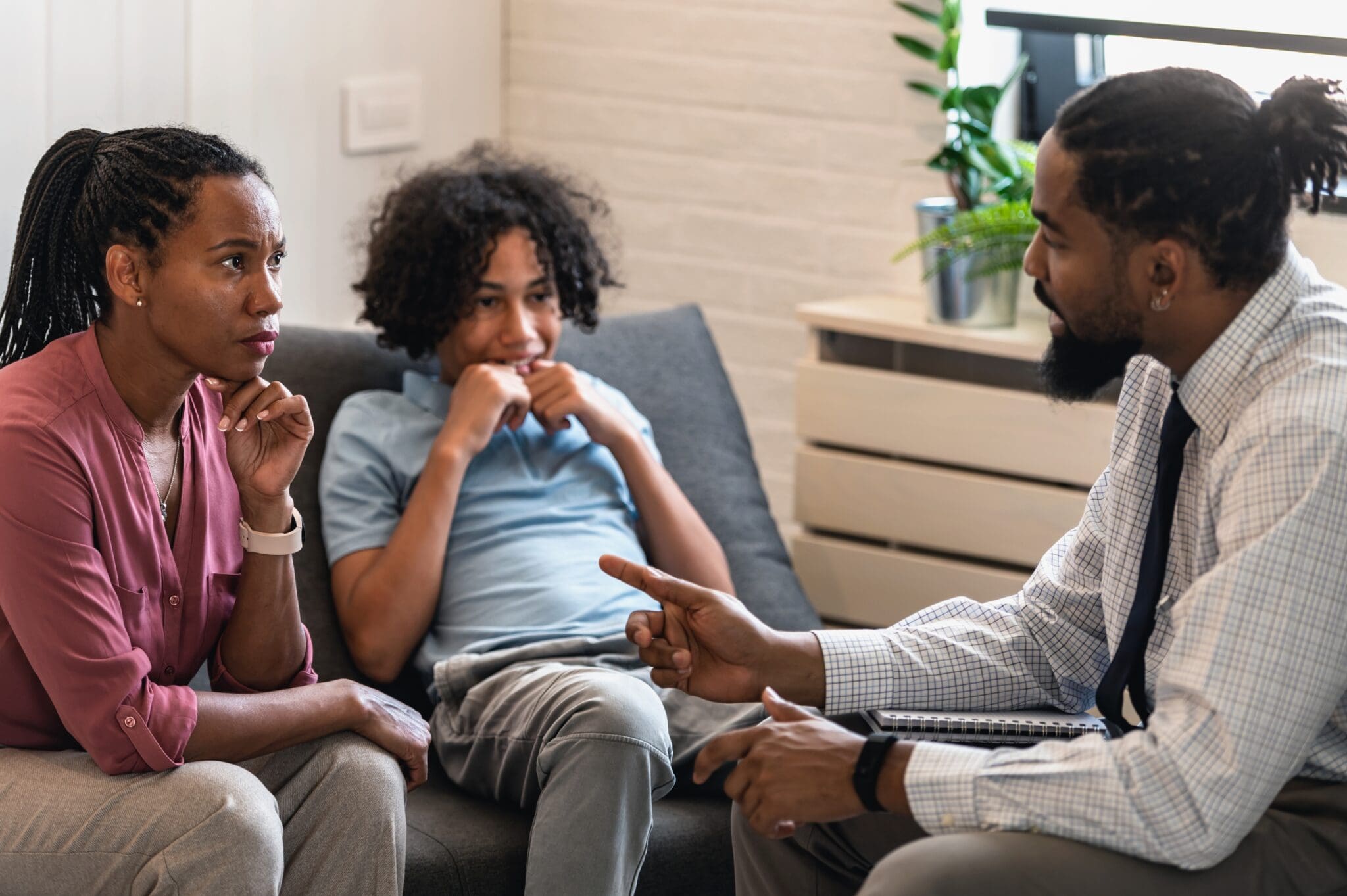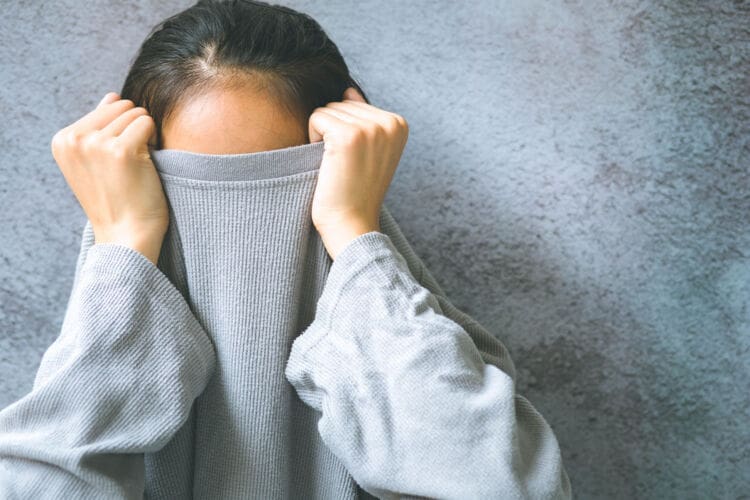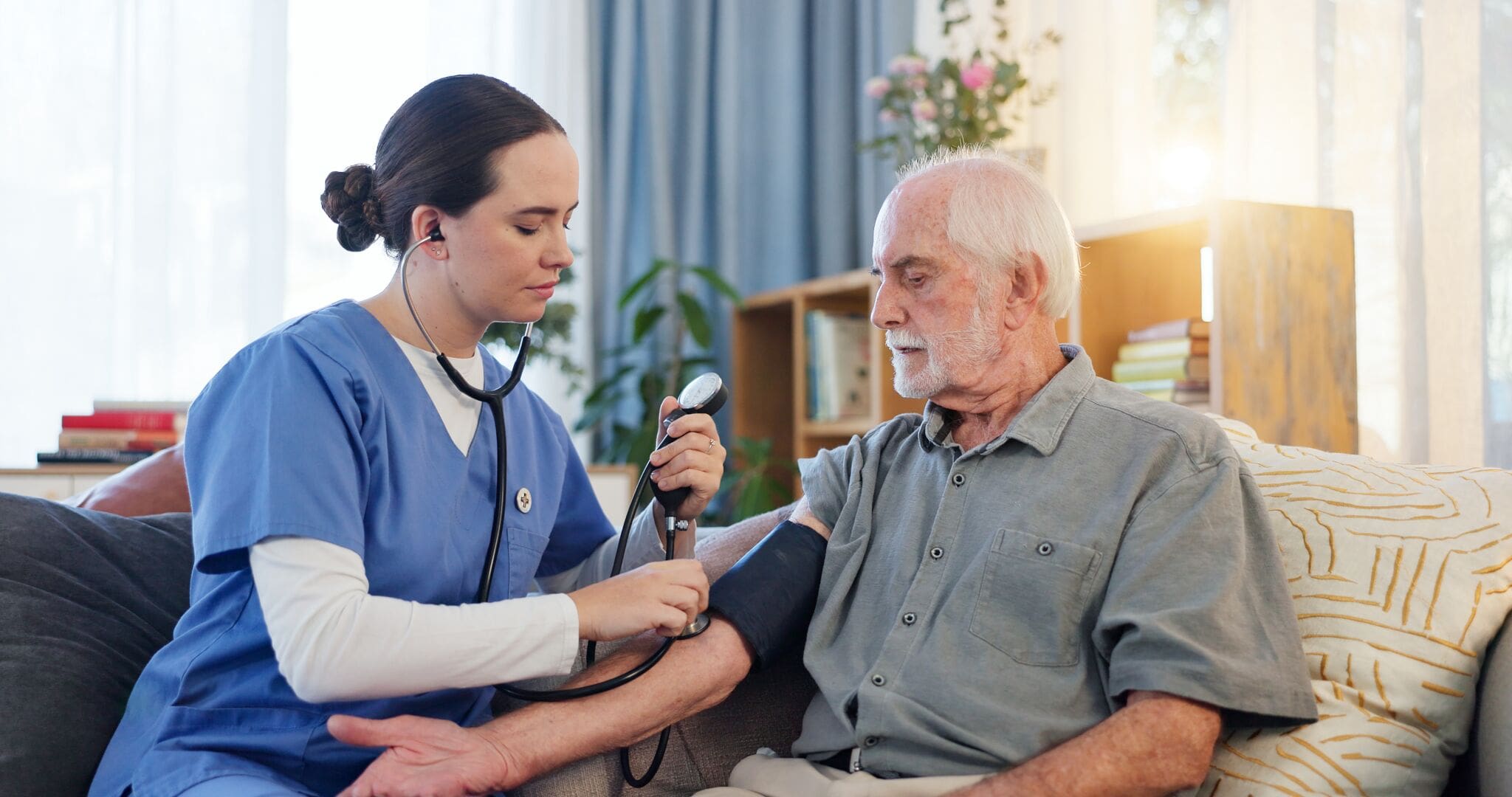In this article
Fear is one of the oldest and most essential emotions known to humans. It helps us survive, keeps us alert to danger and motivates quick, protective action in threatening situations.
However, fear can also become maladaptive – transforming into a phobia that dominates thinking, disrupts daily life and causes intense emotional distress even in the absence of real danger.
Understanding the difference between fear and phobia is vital for those struggling with these experiences and their friends, families, educators and employers who may need to offer support.
Within the UK, where mental health awareness is evolving but stigma can still persist, clear distinctions and practical advice are needed. This guide delves deeper into the psychological, behavioural and neurological aspects of fear and phobia, highlighting challenges, coping strategies, treatment options and support channels relevant to UK readers.
Defining fear and phobia
Fear, in its healthiest form, is a protective response to actual or perceived danger. When we sense a threat – whether it’s a fast-approaching vehicle, an aggressive animal or an alarm sounding – our minds and bodies mobilise to keep us safe. This reaction is temporary, proportionate to the risk and fades once the danger has passed.
Everyone feels fear at some point, and most fears are shared and easily understood. For example, most people will flinch away from a hot stove or become alert when walking down a poorly lit alley at night.
Phobia, however, is more than an exaggerated fear. It’s a recognised mental health disorder marked by persistent, irrational and overwhelming dread of a specific object, activity or situation.
Phobic reactions persist for months or years, cause significant anxiety and often lead to avoidance behaviours that interfere with work, relationships and overall quality of life. Unlike general fear, phobia triggers anxiety even when the threat is remote or non-existent. For those with a fear of spiders, even seeing a picture of one can be highly distressing.
In the UK, phobias are one of the most common anxiety disorders, affecting millions of adults and children, with symptoms that range from mild discomfort to full-blown panic attacks.
How the brain processes fear
The human brain is finely tuned to process threats, thanks largely to the amygdala – a small, almond-shaped cluster of nuclei deep in the temporal lobe. When faced with a potentially dangerous situation, the amygdala rapidly assesses sensory information and activates the hypothalamus, which in turn triggers the autonomic nervous system’s “fight-or-flight” response. Adrenaline and cortisol flood the body, preparing muscles to act, sharpening attention and increasing heart rate and breathing.
With phobias, this process becomes dysregulated. The amygdala also responds to harmless stimuli associated with fear. The prefrontal cortex, which usually helps regulate emotional reactions and appraise danger rationally, struggles to dampen this response. The neural pathways involved in fear become “hardwired”, making the association between the phobic trigger and anxiety extremely strong. This neurological conditioning means that even subtle reminders of the phobic stimulus – such as a word, smell or image – can spark intense, involuntary panic.
Over time, these brain changes reinforce the phobia, making it harder to overcome without targeted psychological intervention. Recent neuroimaging studies have shown that people with phobias display increased amygdala activity even when exposed to harmless representations of their feared object or situation, helping to explain why reassurance or logical reasoning alone is rarely enough to manage reactions.

When does normal fear become a phobia?
Recognising when fear crosses the line into phobia is crucial for getting timely help. Normal fear is rational, time-limited and proportionate to the situation. It helps you adapt, avoid danger and learn from experience. Once the threat passes, so does the fear – you can return to your usual routine. By contrast, phobia lingers, intensifies and becomes increasingly disconnected from actual risk.
A phobia is marked by avoidance that is difficult or impossible to control, lasting six months or longer and causing noticeable distress and challenges. It sometimes begins with a traumatic incident – like a child being bitten by a dog – or emerges more subtly, building up through repeated negative experiences, social pressures or learned behaviour.
It helps to draw a direct comparison to understand how fear differs from phobia. For example, many people are a little uncomfortable with heights, but someone with acrophobia (height phobia) may avoid bridges, escalators or even looking out a window several storeys up, even if these situations are objectively safe.
The impact can be profound: missed opportunities, strained relationships, educational setbacks and even isolation. The persistence and severity of the anxiety, along with the lengths a person will go to in order to avoid the trigger, are clear signs that normal fear has become a clinical phobia.
Common types of phobias
Phobias are typically grouped into three broad categories, each with distinct features and common triggers:
- Specific phobias – These involve intense, irrational fear of a particular object or situation. Some of the most common specific phobias in the UK include:
- Animals – Dogs (cynophobia), spiders (arachnophobia), snakes (ophidiophobia)
- Natural environments– Heights (acrophobia), water (aquaphobia), thunderstorms (astraphobia)
- Situational – Enclosed spaces (claustrophobia), flying (aviophobia), driving (vehophobia)
- Blood-injection-injury – Seeing blood (hemophobia), injections/needles (trypanophobia), undergoing medical procedures (tomophobia)
- Social phobia (social anxiety disorder) – An intense fear of situations where judgement, criticism or embarrassment might occur, which can lead someone to steer clear of public speaking, group activities or even one-to-one conversations.
- Agoraphobia – Sometimes portrayed as a fear of open spaces, but it’s actually a fear of being in places where the person might not be able to escape or get help if they panic or feel anxious. As a result, people with agoraphobia may avoid crowded shops, public transport, cinemas or simply leaving their home.
Less common phobias, such as emetophobia (fear of vomiting), are less commonly discussed but can be just as debilitating, significantly limiting a person’s daily life and choices.
Physical and emotional responses compared
Both fear and phobia set off a range of physiological reactions, but the intensity and persistence differ. In typical fear, symptoms like rapid heartbeat, sweating, shortness of breath, shaking and a feeling of “butterflies” in the stomach are normal and pass when safety returns. These responses are part of the body’s defence system and fade quickly.
Phobic reactions, however, tend to be much more severe and can be triggered by minimal or indirect contact with the feared stimulus – even seeing it on TV or imagining it.
- Physical responses – Can escalate into panic attacks, involving chest pain, choking sensations, dizziness, tingling, nausea or feeling detached from reality.
- Emotional responses – Phobias can take a significant toll on the emotions, triggering feelings of dread, helplessness, shame or embarrassment, particularly if others witness the reaction.
Unlike fear, which may prompt caution and then pass, phobia can leave a lingering sense of vulnerability, anticipation or worry about future encounters, creating a cycle of anxiety and avoidance that becomes deeply ingrained in daily life.
What causes phobia?
The role of past experiences and trauma
For some people, a specific traumatic event – like a childhood accident, moment of public humiliation or medical emergency – can spark a lasting phobia. The mind can create a powerful, often unconscious, link between the event and its surroundings, so similar situations later on trigger that same fear. For example, a child once trapped in a lift might still feel intense anxiety in enclosed spaces as an adult.
Trauma isn’t always direct. Observing someone else’s fearful response or being repeatedly warned about a potential danger can create phobic associations. Media reports, family beliefs and social messaging can also shape attitudes and reactions. However, not all phobias can be traced to a clear traumatic origin. In other cases, there’s no clear “starting point” – fears can grow gradually from smaller experiences or emerge without any obvious cause.
Understanding how trauma and past experiences shape fear responses is essential in treatment. Therapies like CBT often focus on reframing these experiences and loosening their grip on day-to-day life.
Genetic and environmental influences
Research shows that phobias tend to run in families, suggesting a genetic link in how people experience fear and anxiety. Studies of twins have found higher rates of specific phobias among identical twins compared to non-identical twins. While genes may make some people more susceptible to developing phobias, environmental factors play just as big a role.
Parenting style, cultural background and early learning are key. Children whose parents react anxiously to certain objects or situations may “learn” to be fearful themselves.
In some cultures or families, certain fears are reinforced or even encouraged, while others are downplayed or ignored. Societal stigma, misinformation about mental health or lack of access to supportive services in the UK can also affect whether people seek help for their phobias and how they manage them.
Stressful life events – such as bereavement, illness or loss – can sometimes spark a phobia in people who are already vulnerable. The interplay between genetics and environment highlights the importance of a holistic, person-centred approach to support and treatment.
How does a phobia impact a person’s daily life?
Avoidance is at the heart of many phobias and is often the most disruptive part. People will go to great lengths to avoid their triggers, sometimes rearranging their entire lives – declining job offers, missing school, losing social connections or refusing medical care. The short-term relief that comes from avoidance reinforces the phobia, making the anxiety even harder to overcome.
The impact can be subtle or severe. Someone with social phobia may skip parties or work meetings or avoid eating in public, while a person with a driving phobia might rely on others for transport or miss family events. Over time, avoidance can lead to isolation, depression, low self-esteem and practical setbacks like job loss or falling behind in studies.
Avoidance behaviour is not a sign of weakness or laziness; it’s a learned response to overwhelming anxiety. Recognising and gently challenging avoidance, ideally with professional support, is a key part of recovery.
Phobia in the workplace and educational settings
Phobias can present unique challenges at school or work, potentially leading to missed days, underperformance or stepping back from valuable opportunities.
In the UK, the Equality Act 2010 requires employers and educational institutions to make reasonable adjustments for those with mental health conditions, including phobias. These might include offering flexible working hours, remote learning or work, alternative assessment arrangements or access to a quiet space during the day.
Managers, teachers and colleagues should create an open, supportive environment where people with phobias feel safe to share their needs without fear of judgement or negative consequences. Many organisations now offer mental health training and access to employee assistance programmes or in-school counselling services. With the right support, most people with phobias can thrive in education and employment.
Diagnosing phobias
Diagnostic criteria: DSM‑5 and ICD‑11
Diagnosing a phobia involves a careful assessment guided by internationally recognised manuals such as the DSM-5 (used in the US and increasingly in the UK) and the ICD-11 (used worldwide, including by the NHS).
The fear must:
- Be clear, persistent and excessive
- Be linked to a specific object or situation
- Cause immediate anxiety and avoidance
The symptoms must:
- Cause significant distress OR interfere with the person’s ability to function at work, school or in relationships
- Have lasted for at least six months
Importantly, adults with phobias usually recognise their fears as unreasonable, but children may not.
Diagnosis is typically made by GPs, psychologists or psychiatrists who will assess the history, duration and impact of symptoms and rule out other causes such as general anxiety disorder, OCD or trauma-related disorders.
Screening and self‑assessment tools
Screening tools and questionnaires are widely used in the UK to support the assessment of phobias and guide further treatment. These may include:
- The Fear Survey Schedule
- Social Phobia Inventory (SPIN)
- Generalised Anxiety Disorder Assessment (GAD-7)
These tools help quantify the intensity and frequency of symptoms, track progress and guide therapeutic decisions.
Online self-assessment quizzes, often hosted by charities or the NHS, can offer useful initial insights. While they are no substitute for a professional assessment, they can be a private, low-pressure way to explore concerns before speaking to a GP or mental health professional.
When to seek professional help
Knowing when to seek help for a fear or phobia isn’t always easy, but certain signs indicate it’s time to act. These include:
- Persistent distress
- Avoidance that limits daily life
- Panic attacks
- Impact on relationships or work
- Worsening symptoms
If anxiety is accompanied by depression, substance misuse or thoughts of self-harm, urgent professional support is essential.
In the UK, a GP is usually the first point of contact, offering initial assessment, advice and referral to NHS or community mental health services. Early intervention greatly improves outcomes, and effective treatment is available regardless of how long the phobia has been present.

Treating phobias
Phobias are common but highly treatable, and with the right mix of professional help, coping strategies and social understanding, those affected can reclaim their confidence and live fuller lives. If you or someone you know is struggling, remember that help is available – and that overcoming fear is always possible with the right support.
CBT, exposure therapy and more
Cognitive behavioural therapy (CBT) is the gold standard treatment for phobias. It helps people identify unhelpful thoughts, understand how avoidance reinforces anxiety and learn practical skills for managing symptoms.
A core part of CBT for phobia is exposure therapy, where the person is gradually and safely exposed to the feared object or situation. This “graded exposure” might start with imagining the trigger, then looking at pictures and ultimately facing the real situation – all with support and coping strategies. Over time, this process “rewires” the brain, reducing anxiety and building confidence.
Other approaches can include mindfulness, acceptance and commitment therapy (ACT), relaxation training and, for some, group therapy or virtual reality exposure. The NHS Talking Therapies service offers free or low-cost access to these treatments across the UK, with referrals available via GPs or self-referral in many areas. Private therapists and third-sector organisations such as Anxiety UK also provide specialist support.
Use of medication in severe cases
Medication can be a useful part of treatment for some people, particularly when the phobia is severe, longstanding or accompanied by depression or generalised anxiety.
- SSRIs (selective serotonin reuptake inhibitors) can help reduce the underlying anxiety that feeds the phobia, making psychological therapy more effective.
- Beta-blockers may be used short-term to control physical symptoms, such as trembling or rapid heartbeat, especially in situations like public speaking.
- Benzodiazepines can provide brief relief but are generally not recommended due to their potential for dependence and side effects.
All medication should be prescribed and monitored by a GP or psychiatrist, with regular reviews alongside psychological therapies.
Coping strategies and self‑help techniques
Many people with mild to moderate phobias find self-help techniques can make a meaningful difference, either on their own or alongside therapy. Common strategies include practising relaxation or breathing techniques to calm acute anxiety, and using gradual self-exposure by setting small, achievable goals and tracking progress to build confidence.
Keeping a diary of triggers and responses, practising positive self-talk and accessing support through online forums, helplines or support groups can all build a sense of connection and hope. The UK’s leading mental health charities, such as Mind and Anxiety UK, offer practical guides, self-help workbooks and phone or online counselling.
Remember that setbacks are normal and don’t mean you’re failing. Persistence, compassion and reaching out for help when needed are key to making lasting changes.
How to support someone with a phobia
Supporting a friend, colleague or loved one with a phobia can make a real difference. Start by listening without judgement, taking their fears seriously and offering reassurance. Avoid calling their anxiety “silly” or “irrational” – even if the fear doesn’t make sense to you, it’s very real to them.
Practical support might include accompanying them to therapy appointments, helping them plan for challenging situations or learning about their specific phobia together. Encourage them to seek professional help when needed and celebrate even the smallest steps forward. Patience and consistency are key, as overcoming phobia is often a gradual journey.
Supporting children with phobias
Phobias often start in childhood, and early support can prevent them from becoming deeply rooted or disrupting development. In the UK, parents, teachers and healthcare professionals are encouraged to watch for signs such as ongoing avoidance, distress, tantrums or unexplained physical complaints (like stomach aches before school).
Schools may offer pastoral support, access to school counsellors or referrals to child and adolescent mental health services (CAMHS). Family therapy, play-based interventions and age-appropriate CBT can be very effective. Encouraging children to talk about their fears, validating their feelings and gradually helping them face their worries builds resilience.
A joined-up approach between schools, parents and mental health teams ensures the child’s emotional well-being and academic progress stay at the heart of the plan.

UK‑based services and charities
The UK is home to a strong network of support for those with phobias and other anxiety disorders.
NHS Talking Therapies (formerly IAPT) offers free, evidence-based treatments and most GPs can refer directly or provide signposting for self-referral.
Charities such as Anxiety UK, Mind, No Panic and YoungMinds offer helplines, information, online forums and peer support groups.
For children and families, school counsellors and CAMHS are key resources. Community groups, online support and even digital therapy apps provide a wide range of options for those seeking help – often with short waiting times and accessible resources.






